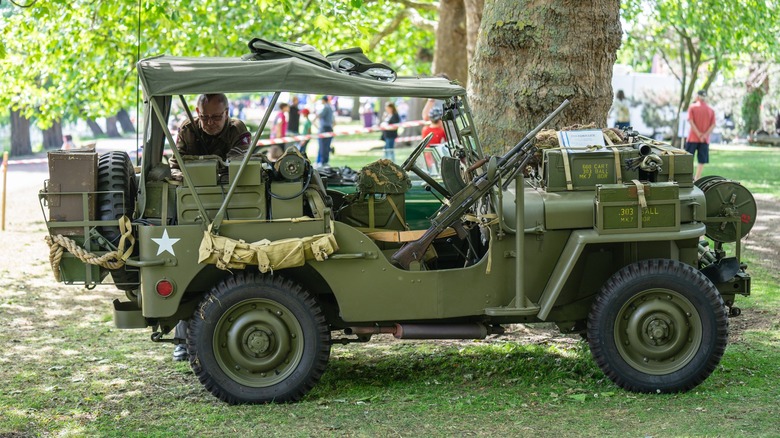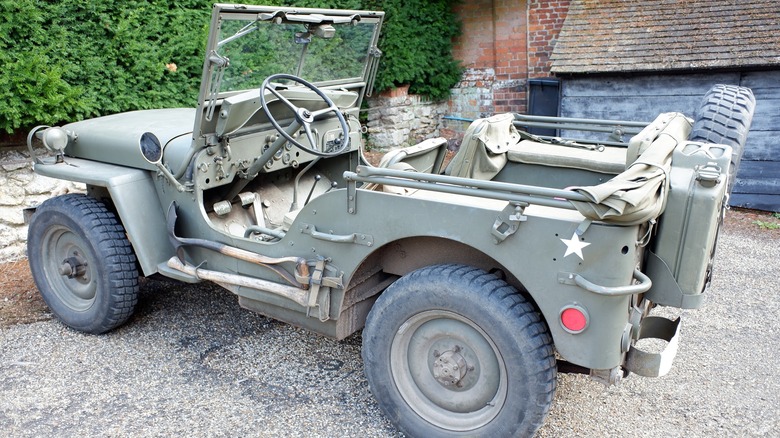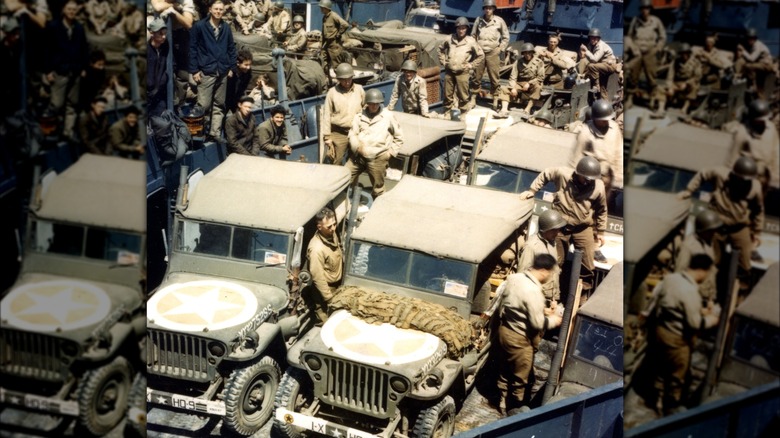When (And Why) Ford Began Producing Jeeps
Several automakers have produced Jeep-branded vehicles over the previous eight decades. Currently, Fiat Chrysler Automobiles owns the brand and produces a variety of Jeep vehicles. Chrysler has held the Jeep brand through its tumultuous past since 1987 through the DaimlerChrysler days, which ended in 2007, and Chrysler's bankruptcy in 2009. Chrysler acquired Jeep as part of its acquisition of American Motors Corporation (AMC), ending AMC's 17-year production run of Jeep vehicles.
Before AMC, Jeep was owned by Kaiser Motors from 1953 to 1970. The first civilian Jeep, or CJ, automaker was Willys-Overland. Released after the end of World War II in 1945, the Willys CJ-2A didn't stray too far from its wartime roots. The CJ-2A was marketed as a "powerhouse on wheels," according to Jeep, designed to work farm fields with a "belt-driven governor" to control engine speeds from "1,000 to 2,600 rpm" and an "onboard power take-off unit" to power farm implements and other tools.
However, the Jeep story started five years earlier with a call from the U.S. Army for bids to produce a "light reconnaissance vehicle tailored to Army specification.
Ford's involvement in Jeep production
As WWII loomed on the horizon in the summer of 1940, 135 automakers received requests to submit bids to build a light-duty, general-purpose vehicle to serve the U.S. Army. Out of those 135 companies, the only two to respond were Willys and American Bantam Car Company. Willys delivered the first prototype, dubbed the Quad because of its four-wheel drive capability, 75 days later and, after extensive testing and further development, won the contract.
Soon after the contract award, Willys-Overland began producing the Willys MB for the upcoming war effort. However, by October 1941, production was falling behind schedule to support the Army's requirements. The Army reached out to Ford for help, and Ford began production of the GPW using the Willys MB design. One legend has it that slurring the GP, short for General Purpose, designation ultimately led to the Jeep name. Over the course of the War, Willys produced around 363,000 Willys MB vehicles for the Army and Ford, starting GPW production a year later than Willys, built about 280,000 Army "Jeeps," according to The National Museum of World War II Aviation.
Willys MB and Ford GPW specifications
Both models rode on 6.00x16-inch tires, fold-flat windshields, and a bracket to hold a gasoline can on the back. Army specifications for the original bid called for a minimum of 45 horsepower, but production models over-delivered with an engine producing 60 horsepower at 4,000 rpm.
The Willys MB and Ford GPW had an 80-inch wheelbase, 132.25-inch overall length, and weighed 2,453 pounds, ready to roll out. While its ground clearance was a mere 8.75 inches, it could ford water up to 21 inches deep and, with good traction, could climb 60-degree grades. With a cruising range of only 20 miles, the extra gas can on the back came in handy.
The MB/GPW models sported the original factory soft top supported by twin roof bows. They also came prewired for trailer lights and had spark suppression and blackout light systems for nighttime operations.
While Ford never made a civilian model Jeep, it introduced the Ford Bronco two decades later. Today, the Bronco is a top competitor to the Jeep Wrangler.


